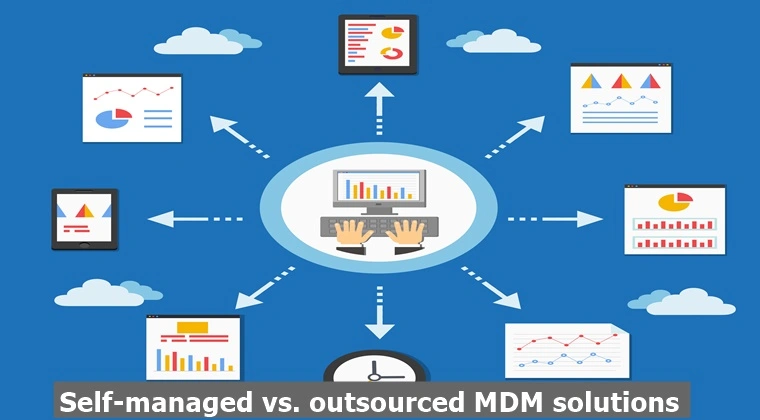Self-Managed vs. Outsourced MDM Solutions

In today's technology-driven world, businesses require effective Mobile Device Management (MDM) solutions to carry out daily activities and manage the devices fleet. To remain completive, businesses now support remote working and are reliant on mobile devices to perform operations.
Therefore, it has now become essential for all corporates and Small and Medium Sized (SME) organizations to deploy MDM solutions that can help them in keeping track of their devices, monitoring employee's activities and evaluating their performance. In general, there are two options available regarding the deployment of MDM solutions.
Organizations can either choose to manage the solution in-house or outsource it to some third-party vendor. Both approaches have their own advantages and disadvantages.
This article sheds light on the benefits and downsides of self-managed and outsourced MDM solutions.
Self-Managed MDM Solutions
In this setting, MDM solution is deployed on the servers of an organization and is managed in-house with the help of specialized MDM team or IT department. With the help of a self-hosted deployment approach, the IT team can install robust security mechanisms to protect data. Moreover, stringent policies can be defined on network perimeter devices to mitigate cybersecurity risks. Some major benefits of this approach are listed below.
- Cost-Effectiveness: This approach helps in reducing the costs of MDM deployment as IT team can use existing servers and infrastructure to configure this solution. Moreover, this solution is economical in the long run as there is not any subscription fee associated with the third-party vendor.
- Better Control: The self-managed MDM solution can be customized according to the needs of the organization to ensure greater control as this solution is implemented and managed on the premises of corporate. Therefore, such deployment of MDM software provides agility and flexibility in administering mobile devices.
- Improved Security: The most important benefit of a self-managed MDM solution is the level of security it provides. In this scenario, the enterprises have complete control over the security protocols and access control mechanisms that ensures data remains confidential, protected and encrypted.
Besides several benefits, self-managed MDM solutions come with numerous challenges that must be considered properly before deciding. Some of the disadvantages are described below.
- Scalability Issues: In comparison to outsourced MDM solutions, this setting of mobile device management is not as scalable due to which organization must procure additional software and hardware to manage growing device fleets.
- Time Consuming: The process of deploying and managing an MDM solution in-house can be cumbersome and time-consuming for companies with limited IT infrastructure and personnel. It may distract the IT team from other important initiatives and tasks that might jeopardize the operations of the organization.
- Upfront costs: In most cases, this type of MDM deployment setting requires higher upfront investment in personnel, software and hardware regarding configuration and management of the solution.
Outsourced MDM Solutions
In this type of MDM deployment setting, a third party is responsible for managing the solution on behalf of the company. In this setting, a third-party manages the solution and employees can access it through web browser. The important advantages of outsourced MDM solution are discussed below.
- Reduced upfront Cost: In contrast to self-managed MDM solution, this setting has lower upfront cost as the organization just must purchase the package and there is not any requirement of procuring additional staff, software and hardware to configure and manage the solution.
- Scalability: With the help of outsourced MDM solution, managing the growing devices fleet is easy to manage as third-party vendors can provide support for additional devices without the hassle of investment in infrastructure and personnel.
- Time-Saving: This type of solution may save time for the IT team and organization as third party is responsible for management and maintenance tasks. In this way, staff can focus on their tasks without any disturbance.
On the flip side, there are also several drawbacks of outsourced MDM solutions. Some of the challenges are listed below.
- Security Issues: The most important challenge of outsourced MDM solution is security. In this setting, organizations must rely on external security controls and access control mechanisms that might not be secure enough to protect organizations from cyberattacks.
- Limited Control: with outsourced MDM software, enterprises do not have enough control over the solution due to which they cannot customize it to meet their business needs and deal with the exceptions.
- Ongoing Costs: Although this type of MDM solution does not incur upfront costs but ongoing costs regarding subscription fee and other usage expenses are quite high. In addition, these costs are subject to increase with time.
Both MDM solutions come with a set of merits and demerits. Therefore, it depends on the requirements, size, and nature of the organization to choose the solution that suits them or fulfills their business needs. Organizations should consider pros and cons of both approaches with respect to their organization to select the optimal solution.